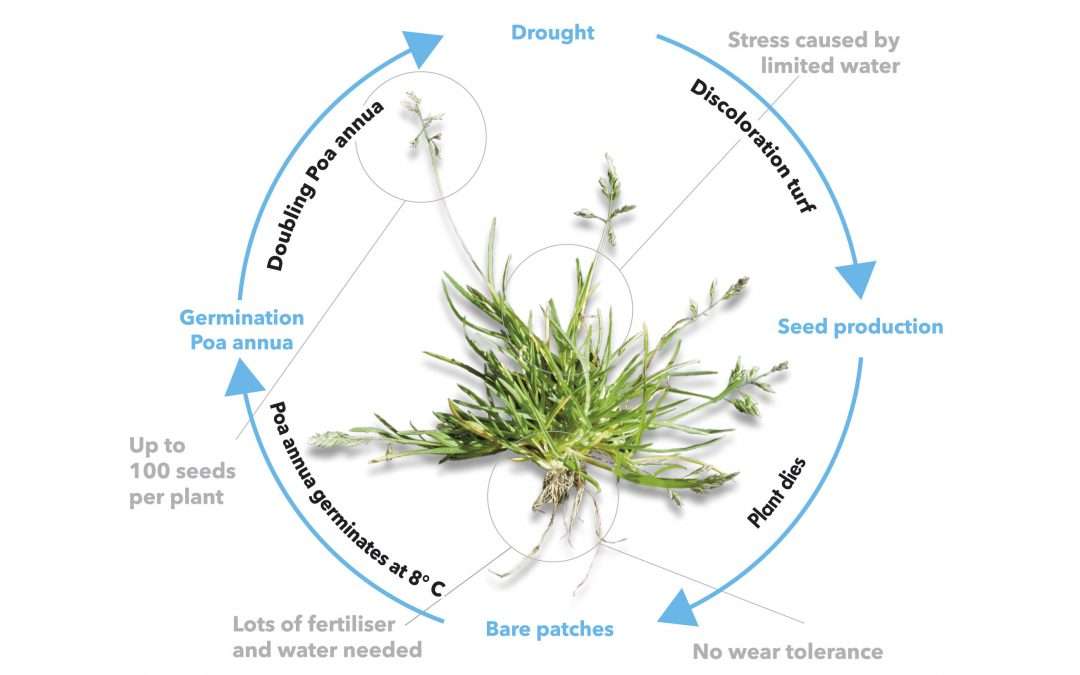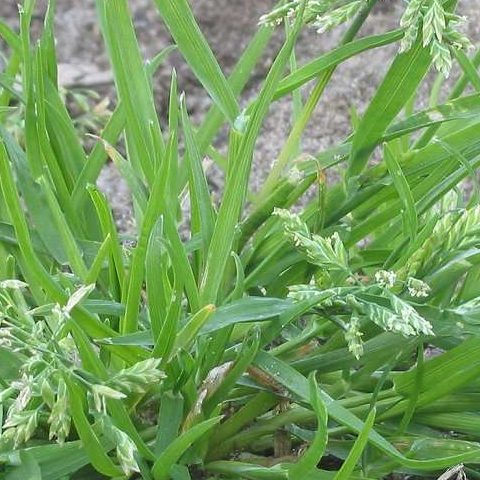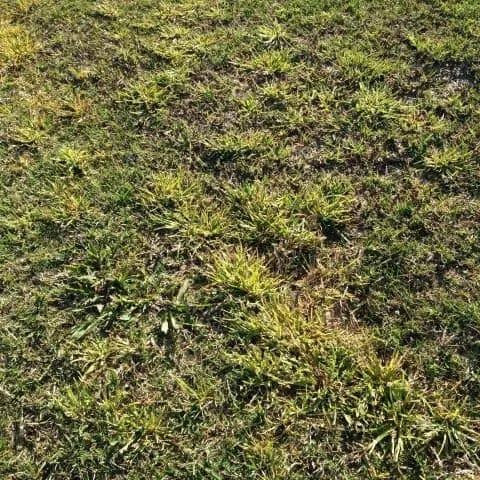Managing winter grass in turf.
In this blog what is winter grass, winter grass killers, winter grass herbicides and killing winter grass in Kikuyu and other turfgrass.
The ability of winter grass to adapt is the key reason why the control of this weed grass is such a problem. Winter grass is a perfect weed competitor. It thrives in shade and full sun, over a wide range of soil moisture levels and is very tolerant of low mowing heights. It also persists all year round and it also produces a heap of seeds.
The fact it matures quickly makes it difficult to control. Worst of all, this weed grass will dominate weak turf due to wear (which leaves thin or bare areas), nutrient deficiency, if it’s too wet, or if there is soil compaction
The seed, is brought in by various means (wind, footwear, unclean machinery, contamination, etc.). In addition, it forms seed banks at the soil surface containing over 2000 seeds/m2, and these seeds can remain viable for years.
How to ID winter grass.
Winter grass (Poa annua) has perennial and biennial biotypes. It has a light green, generally tufted growth habit. You can identify it by its seed head, and has a boat-shaped leaf tip that curls up at the ends.
How to stop winter grass.
Cultural methods are the first step to control winter grass in lawns, golf courses or sports grounds. Certain factors favour this weed, which means if you “get ahead of the curve”, it helps prevent its spread and future growth.
Soil pH
The aim should be to keep the soil pH below 7. Low soil pH helps to slow down winter grass establishment and growth.
- In sand with a pH of 6.5, winter grass has better root growth than if grown at pH 5.0.1Sprague, NB. and Burton, GW. 1937. Annual Blue Grass (Poa annua L.) and its Requirements for Growth. New Jersey Agricultural Experiment Station Bull. 630. 24 p.
- Winter grass does not germinate at pH 3.6, and at a pH of 5.2, only 66% of seed germinates.2Ferguson, NL. 1936. A greenkeeper’s guide to the grasses: The meadow grasses. Journal of the Board of Greenkeeping Research. 15: 274–279.
- At a soil pH of 6.5, it produces twice as many roots and four times as many seed heads in contrast to a pH 4.5.3Juska, FV., and Hanson. AA, 1969. Nutritional requirements of Poa Annua L. Agron. J. 61: 466–468. doi:https://dx.doi.org/10.2134/agronj1969.00021962006100030041x,
- Elemental Sulphur reduced winter grass to only 7% in contrast to 30% with no sulphur.
- Varco and Sartain (1986) 4Varco, JJ and Sartain. JB. 1986. Effects of phosphorus, sulfur, calcium hydroxide, and pH on growth of annual bluegrass. Soil Sci. Soc. Am. J. 50: 128–132. doi:https://dx.doi.org/10.2136/sssaj1986.03615995005000010025x, found that sulphur, acidifies the top 2.5cm of the soil, and reduces winter grass emergence and establishment.
Soil Phosphorus –
Maintain low soil phosphorus levels.
- Applying P increases winter grass levels in a mixed Poa/Agrostis sward.5Goss, RL., Brauen, SE., Orton, SP. 1975. The effects of N, P, K and S on Poa annua L. in bentgrass putting green turf. J. Sports Turf Res. Inst. 51: 74–82..
What winter grass killers are on the market?
There are several winter grass killers to manage winter grass on turf, and if you use these properly, they will all help kill winter grass.
You can class these into two groups of winter grass killer: Winter grass pre-emergent herbicides and post-emergent winter grass herbicides.
Examples of pre-emergent winter grass herbicides are Onset 10GR® (prodiamine), Echelon® (oxadiazon), and Specticle® (indaziflam). These can be liquids or granular pre-emergents.
Examples of post-emergent winter grass killers include Poacure® (methiozolin), Nominee® (bispyribac), and Coliseum® (rimsulfuron).
An overview of winter grass herbicides is below. Check out the turf chemical labels, or contact us if you need more information.
Pre-emergents for managing winter grass in turf.
All of the following stop winter grass before it becomes a problem. Our other blog on factors that can cause pre emergent herbicide failure may also be of interest.
Prodiamine (Barricade®/Onset 10GR®)
- The graph below shows how prodiamine works well for long-term control of winter grass. This length of control is the same for the liquid (Barricade Herbicide) and granule formulations (Onset 10GR).
- Do not apply to newly seeded, sodded, or sprigged turf. You only use this when you have a full turf cover, and the roots are greater than 3 cm depth. Prodiamine can stunt or prune root growth and cause bridging of turf over the surface.
- One application gives up to 6 months control.
- Apply in at least 500 L water/Ha.
- You cannot seed for at least six months after use, so bare this in mind if you intend to reseed.
Pendimethalin (Battalia®/Various)
- See graph below to see pendimethalin performance.
- Water in within one day of use, and the aim is to use 10-15 mm of irrigation or before rainfall.
- With thatchy or soils high in organic matter it gives poor control. So avoid using on soils having greater than 6% organic matter.
- It has a 12-hour re-entry period;
- Pendimethalin will permanently stain (yellow) any objects it contacts;
- Provides up to 2 months of control.
Pre-emergent Winter grass herbicides for turf. Winter grass killers that work before the weed grows | |||||||
Product | Chemical Group | Brand | Active | Rate /Ha | Label | MSDS | Technical Note |
Barricade | 3 | Syngenta | 480 g/L Prodiamine | 1 to 4 L | |||
Dimension | 3 | Nuturf | 240 g/L Dithiopyr | 1.75 to 3.5 L | |||
Dithiomax 19-0-5 | 3 | Nuturf | 1.64g/Kg Dithiopyr | 250 Kg | |||
Pennmag | 15 | Syngenta | 960 g/L | 2.0 L | |||
Battalia | 3 | Indigo Specialty | 435 g/L Pendimethalin | 2.3 to 3.4 L | |||
Checkpoint | 3 | Indigo Specialty | 500 g/L Propyzamide | 600 ml to 1.2 L | |||
Onset 10GR | 3 | Indigo Specialty | 10 g/kg Prodiamine | 50 to 200 Kg | |||
Echelon | 14 | Indigo Specialty | 10 g/Kg Oxadiazon | 300 to 400 Kg | |||
Echelon Duo | 14 and 4A | Indigo Specialty | 10 g/Ka Oxadiazon 1 g/Kg Thiamethoxam | 300 to 400 Kg | |||
Ronstar | 14 | Envu | 20 g/Kg Oxadiazon | 200 Kg | |||
Specticle | 29 | Envu | 200 g/L Indaziflam | 250 ml | |||
Tramat | 15 | Envu | 500 g/L Ethofumesate | 800 ml | |||
Post emergent Winter Grass Killers in Turf.
Post emergent winter grass killers kill winter grass that is already present.
Amicarbazone (Xtron®)
Like simazine and atrazine this is a triazine herbicide. Trials in the USA show it to work well against winter grass in bentgrass, although it can be a bit “fiddly” to use.
- Use lower rates on sandier soils;
- On overseeded couch, if you use this in the spring you will get better results. Also perennial ryegrass has greater tolerance at this time;
- Water volume, temperature, and when you use this affect the results;
- You can use amicarbazone on tall fescue at temperatures of 20-25°C, as it is more tolerant than winter grass;
- Do not apply if the soil pH is > 7.4 and
- Above an air temperature of 27 ºC, you will get turf injury on cool-season turf.
Endothal (Poachek®).
Work carried out by Neylan and Nickson (2015)6Neylan, J.; Nickson, D. Poa Annua Control in Warm-Season Grass Sportsfield 2016. Available online: https://www.turfmate.com.au/uploads/STA%20Poa%20annua%20control%20in%20warm%20season%20grasses%20Final%20Report%20May%202016.pdf. in Couch and Kikuyu grass, found it works in the first day or so after you use it.
Ethofumesate (Tramat®, various).
Ethofumesate is a pre-and early post-emergent winter grass killer in new seedings of perennial ryegrass. Uptake of Ethofumesate is by emerging shoots and roots, and it then moves to the foliage.
- It inhibits seed germination of cool-season grasses other than perennial ryegrass;
- Remove any surface organic matter before use, as this has a negative effect on the results;
- It is very toxic to seedling fine fescues;
- Also, do not use on turf with more than 70% winter grass;
- Don’t use during stressful periods like heat, cold, and drought, and
- When you use this at high rates, it causes temporary discolouration in Kentucky bluegrass and bentgrass turf.
Methiozolin (Poacure®).
- Poacure is a safe to use winter grass killer on all common turfgrass.
- It is very slow-acting, giving a gradual transition from winter grass to bentgrass.
- Uptake is by foliage and roots, but Poacure mainly moves upwards in the plant. When you apply this as a root application, methiozolin translocates from the roots to the crown.
- After two years of single treatments in spring and autumn, winter grass cover was 34% in treated plots and 56% in the non-treated7Askew, S.D., and B.M.S. McNulty. 2014. Methiozolin and cumyluron for preemergence annual bluegrass (Poa annua) control on creeping bentgrass (Agrostis stolonifera) putting greens. Weed Technology 28(3):535-542. doi:10.1614/WT-D-14-00018.1
- Soil-plus-foliar and foliar-only treatments work better than soil-only treatments.
- Control on a soil-based root zone ranged from 72 to 80%. This contrasts with a sand-based root zone where control was from 57 to 64% 8Brosnan, J.T., G.M. Henry, G.K. Breeden, T. Cooper, and T.J. Serensits. 2013. Methiozolin efficacy for annual bluegrass (Poa annua) control on sand- and soilbased creeping bentgrass putting greens. Weed Technology. 27(2): 310-316. 9Flessner, M.L., R.W. Glenn, and J.S. McElroy. 2013. Methiozolin absorption and translocation in annual bluegrass (Poa annua). Weed Science. 61(2): 201-208.
The following may give poor results when using Poacure®.
- If you increase the rate or frequency because you think it is working too slowly.
- Poorly calibrated equipement result in the wrong use rate.
- Too many treatments are made in the autumn or winter.
- After use there is a period of heavy or intense rainfall.
- Mechanical treatments such as aeration which stress the turf.
- You use it with ethephon (Incognito 480SC) in periods of mild to moderate stress.
- Extreme environmental stress such as drought or heat and finally
- You use it with other herbicides/plant growth regulators (PGRs) like trinexapac (Amigo 120).
Propyzamide (Checkpoint®, Various).
Neyland and Nickson in 201510Neylan, J.; Nickson, D. Poa Annua Control in Warm-Season Grass Sportsfield 2016., found that after 5 weeks that there was no change in winter grass levels. Unlike other winter grass herbicides, products like Checkpoint are very slow-acting. However, it does tend to work well in cool weather. However, it gives variable results, especially in soils of greater than >4% organic matter, and is very mobile in the soil.
Sulfonylureas (Various).
In the USA, these are used as “late transition aids”. They are common tools as winter grass herbicides, and to remove ryegrass during transition. Sulfonylureas, all work in the same way and are in the same herbicide chemical group. Switching from one active to the other will not prevent chemical resistance, so don’t only rely on these as to control winter grass in warm-season turfgrass11McElroy JS, Flessner ML, Wang Z, Dane F, Walker RH, Wehtje G (2013) A Trp574 to Leu amino acid substitution in the ALS gene of annual bluegrass (Poa annua) is associated with resistance to ALS-inhibiting herbicides. Weed Sci 61:21–25[/mfn
This winter grass killer group is safe to use on couch, and Duke 100WG is also safe to use on Kikuyu grass. This group includes bispiribac-sodium (Nominee), rimsulfuron (Coliseum), foramsulfuron (Tribute selective herbicide), iodosulfuron (Duke® herbicide), and trifloxysulfuron (Recondo herbicide).
Rules for sulfonylurea winter grass killers.
- Firstly, never apply these within seven days of organophosphate insecticides to avoid turf injury (Ferrell et al, 2004).
- Secondly, foramsulfuron, iodosulfuron, rimsulfuron, and trifloxysulfuron track and damage susceptible turfgrass if not allowed to dry before traffic. Tracking can occur from morning dew the day after treatment. So irrigate on the morning after application and leave a 5-metre buffer area around cool-season areas.
- Thirdly, if the tank water pH is less than 5.5, raise the pH to 7.0.
- Ensure you get complete and even spray coverage with no overlap.
- Use with a spray adjuvant.
- Apply with the boom no higher than 50 cm above the turf with flat fan nozzles and a medium droplet size.
- If you apply these to dry, sandy soils and then rains heavily, these winter grass herbicides may cause turf damage and, finally
- Turf damage may also occur in soils with pH >8.5.
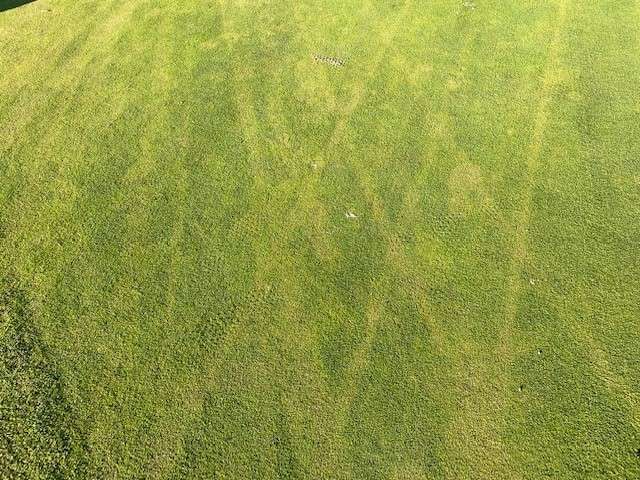
Bispyribac-sodium (Nominee®).
- Nominee is the only SU winter grass herbicide, that is for use on bentgrass golf greens. In the USA. it is called “Velocity”
- If you apply this to creeping bentgrass mowed at 3 mm (Teuton et al. 2007), it can cause injury;
- Severe bentgrass injury can occur at temperatures less than 13ºC and above 29ºC.12Mccullough, P. E., & S. E. Hart. 2006. Temperature influences creeping bentgrass (Agrostis stolonifera) and annual bluegrass (Poa annua) Response to BispyribacSodium. Weed Technology, 20(3): 728-732. doi: 10.1614/WT-05-010R2.1
Foramsulfuron (Tribute® herbicide).
- Tribute Herbicide works best if rainfall or irrigation does not occur within two hours of treatment.
- You can seed ryegrass 2 weeks after use of Tribute Selective herbicide.
Iodosulfuron (Duke®)
- Proforce Duke 100WG herbicide is a Destiny herbicide alternative.
- Duke herbicide is mainly a foliar with less soil uptake;
- Allow at least six weeks between the last use and seeding with cool-season grasses.
- You can safely use Iodosulfuron to suppress winter grass in Kikuyu grass.
Rimsulfuron (Coliseum herbicide®)
- Coliseum is another great winter grass killer.
- Uptake is via roots and leaves.
- You should irrigate one hour after you apply to move this winter grass herbicide into the soil.
- Don’t seed with cool-season turfgrasses for 10 to 14 days after use.
- Coliseum is not safe to use for winter grass in Kikuyu.
Trifloxysulfuron (Recondo 100 WG®)
- Recondo 100WG herbicide is a Monument herbicide alternative.
- You can sprig or seed couch or zoysia grass 4-weeks after use.
- You should delay seeding with cool-season grass for 6 weeks after use.
- Recondo 100WG is not safe to use as a winter grass killer in Kikuyu.
PGRs for Winter Grass in Turf.
A PGR is any chemical that alters plant growth and includes plant hormones, herbicides, growth inhibitors, and even bio-stimulants. PGRs are not winter grass killers or winter grass herbicides but can safely be used for winter grass in Kikuyu grass.
Ethephon (Incognito®/Various).
- Incognito is a great tool to reduce winter grass seed head numbers.
- The trick is to use it at the first sign of the “boot” stage. The boot stage is when the stem swells and indicates that it contains a seedhead.
- If you use ethephon with Poacure you can get creeping bentgrass loss. So, don’t mix these if the greens are going to be under stress.
- Incognito uptake is via the leaf, so apply in the correct amount of water.
- It is important you keep the water pH below 4.5 to optimise ethephon efficacy.
- Buy Ethephon (Incognito 480SC).
Paclobutrazol (Regulate®/Various).
- Regulate inhibits winter grass and makes desirable turf grass more competitive so it can then crowd out the winter grass.
- Regulate 200 is taken up by roots, so apply as a soil drench.
Trinexapac-ethyl (Amigo®/Various).
- Amigo 120 is a great tool for winter grass in turf but you should not use it to remove winter grass;
- Incognito, in a tank mix with trinexapac, is the only product that stops winter grass seed head;
- Repeat applications enhance the tolerance of winter grass to summer stress;
- It suppresses winter grass and allows desirable grass species to outgrow it and lastly
- It increases bacterial leaf etiolation.
Post-emergent wintergrass herbicides for turf - wintergrass killers that work once its growing | |||||||
Product | Chemical Group | Brand | Active | Rate /Ha | Label | MSDS | Technical Note |
Coliseum® | 2 | Turf Culture | 250g/Kg Rimsulfuron | 120ml | |||
Recondo® | 2 | Indigo | 100g/L Trifloxysulfuron-sodium | 115ml-300ml | |||
Nominee® | 2 | Nuturf | 100g/L Bispyribac-Sodium | 1L | |||
Poachek® | 31 | Campbells | 175g/L Endothal | 1.5L | |||
Poacure® | 31 | Campbells | 240g/L Methiozolin | 2-4L | |||
Checkpoint® | 3 | Indigo Specialty | 500g/L Propyzamide | 600ml-1.2L | |||
Duke® | 2 | Indigo Specialty | 100g/Kg Iodosulfuron-Methyl-Sodium | 25g-150g | |||
Tramat® | 15 | Envu | 500g/L Ethofumesate | 800ml | |||
Tribute® | 2 | Envu | 22.5g/L Foramsulfuron | 1-5-2L | |||
Xtron® | 5 | Nuturf | 700g/Kg Amicarbazone | 170-300g | |||
FAQ
What herbicide kills winter grass?
Before you reach for the herbicide, you should create conditions that favour the grass you want rather than winter grass. A healthy, thick turf cover that is not over-watered and not in shade will help prevent this weed from becoming established.
Several winter grass killers are available that either prevent the problem in the first place or remove it from desirable grass if it’s already there.
The trick is knowing how to use these to get the best results. The key to this is timing your treatment. Timing is extremely important for pre-emergent applications. Our blog discusses the 7 factors that can impact the results of using pre-emergents, and one of the factors we discuss is timing.
However, inevitably winter grass will appear, and that’s when post energent herbicides come into play.
With so many pre-emergent options I get confused. How do i decide what to use?
Yes, it can be confusing. A simple guide is if you can see winter grass use a post-emergent winter grass killer. That means use that the product kills already existing winter grass. Products to consider for use on your lawn include Amgrow Chemspray Winter Grass Killer, David Grays Winter Grass Killer, or Munns Professional Wintergrass killer. Be aware that the last two are based on the same active ingredient.
If you are trying to stop it from returning, then you should use what is called a pre-emergent herbicide. Products that are pre-emergent herbicides include Barricade herbicide, Onset 10GR and Echelon Duo. After that what you choose is influenced by factors such as the length of control wanted, what your grass type is, and the availability of water. Gilba Solutions has over 30 years of experience in the turf and amenity market so if you would like help in making a choice or have any questions please feel free to ask away.
References
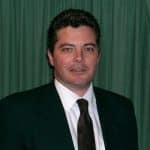
Jerry Spencer
Jerry has an Hons Degree in Soil Science (1988) from Newcastle Upon Tyne University. He then worked as a turf agronomist for the Sports Turf Research Institute (STRI) until 1993.
He gained a Grad Dip in Business Management from UTS in 1999. He has held a number of technical roles for companies such as Arthur Yates (Commercial Technical Manager) and Paton Fertilizers (Organic, turf specialty and controlled release fertiliser) portfolios.
In 2013 he established Gilba Solutions as independent sports turf consultants and turf agronomists. Jerry has written over 100 articles and two books on a wide range of topics such as Turf Pesticides and turfgrass Nutrition which have been published in Australia and overseas.

